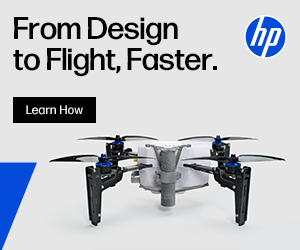Danish firm COBOD is releasing a new printer, the BOD3 3D Construction Printer. Already in use in Bahrain, Indonesia, and Angola, the track-based machine can print buildings sequentially, row by row. The track extends along the Y-axis, minimizing downtime and optimizing the printing of multiple buildings without moving the printer. An Advanced Hose Management System (AHMS) ensures consistent material flow, while dual hoses allow for easy mixing of additives or other materials. Instead of being pre-mixed, additives are now combined at the nozzle, closer to the point of extrusion, which enables faster printing. The motion stage, called the Universal X-Carriage, is designed for future expansion. COBOD envisions clients being able to pump in PU insulation, apply paint, or perform machining to smooth layers, which would eliminate the need for formwork and significantly reduce scaffolding requirements. This reduction in scaffolding not only speeds up construction but also lowers costs by cutting the time spent waiting for sequential trades. Additionally, the company emphasizes that its materials can be sourced 99% locally, with only 1% additive needing to be imported, providing a further cost advantage over some competitors.
In Bahrain, the printer is used by Ab’aad 3D, a subsidiary of Haji Hassan Group, a local leader in cement, concrete, admixtures, precast, blocks, and asphalt. In Indonesia, the BOD3 is operated by Modula Tiga Dimensi, a joint venture between Bakrie & Brothers (BNBR) and COBOD. Bakrie is a major player in road construction, power plants, car parts manufacturing, and more, with 70,000 employees, making it one of the largest industrial conglomerates in the region. In Angola, Power2Build, a relatively smaller company, is pushing forward with the technology.
“The global housing crisis demands a more efficient construction solution that is faster, more efficient, and scalable. The BOD3 is our answer to this challenge. Drawing on years of research and expertise, we’ve designed the BOD3 with innovative features, making it our most cost-effective and efficient model yet for multiple low-rise buildings. Its design supports high-volume, linear production of houses, enabling mass production without compromising quality. The fact that six units have already been sold before its official launch speaks volumes about the BOD3’s market demand and the trust our customers place in our technology,” said COBOD General Manager Henrik Lund-Nielsen.
“The advanced ground-based track system was developed as a response to our customers’ needs to increase efficiency and productivity. Now the 3D construction printer can be easily extended, and multiple consecutive structures can be printed with minimal repositioning and zero downtime between projects, making 3D construction printing more efficient than ever before,” stated Chief Innovation Officer Michael Holm.
It’s encouraging to see COBOD advancing in this space. The construction 3D printing market is expanding rapidly, with large-format polymer and concrete 3D printing companies performing particularly well. Many early-stage startups and large construction groups are eager to explore digital construction, driven by the fear of being left behind. Additionally, staffing shortages and rising labor costs are pushing more firms to invest in 3D printing technologies. It will take some time for these companies to establish themselves and execute viable business models. In a series of articles in 2022, I argued that we should focus on 3D printing financial opportunities, not just houses, and that the most significant immediate potential lies in infrastructure projects in the developing world.
At the time I stated that, “To me, the ultimate genesis for additive construction is in combining mass customization software, regional 3D printing and 3D printing in factories in the developing or austere world will be the next great frontier… We’d put in the singular items that are most needed where they are needed… This is where 3D printing would shine. Not to plough a new neighborhood somewhere in the US, but rather to build single points of the most-needed infrastructure in developing societies.”
The fact that the launch customers for this printer are all in the developing world or operating in austere environments is, to me, a clear sign that 3D printed construction is advancing beyond the usual suspects. While metal and polymer 3D printing remain centered in regions like China, the US, and Europe—with OEMs, service providers, and users concentrated there—construction 3D printing is evolving into a much more globalized phenomenon.
Subscribe to Our Email Newsletter
Stay up-to-date on all the latest news from the 3D printing industry and receive information and offers from third party vendors.
Print Services
Upload your 3D Models and get them printed quickly and efficiently.
You May Also Like
Export-Import Bank of U.S. Loans $27.4M to 6K Additive to Boost U.S. Metal Powder Output
Critical minerals have overtaken news cycles all year, with U.S. tariffs and Chinese export curbs disrupting supply chains and driving new waves of investment. As recently as last week, at...
Formnext 2025: Day Four: Beauty the World (Through Missile Defense)
Day four, without the Americans and executives, is a joy. It feels a bit like the last days of summer, languid, time passing in globs of molasses. In looking back,...
Firestorm Labs’ xCell Helps U.S. Army Train for 3D Printed Drone Missions
The U.S. Department of War (DoW) has been telling anyone who will listen that the Pentagon is making major changes to how it procures equipment. In a recent speech at...
Trident Warrior 2025 Becomes a Massive Showcase for 3D Printing — With 11 AM Companies in the Field
Every year, the U.S. Navy runs an exercise called Trident Warrior to test new technologies under real operating conditions. In 2025, the biggest surprise was how central 3D printing became....



































